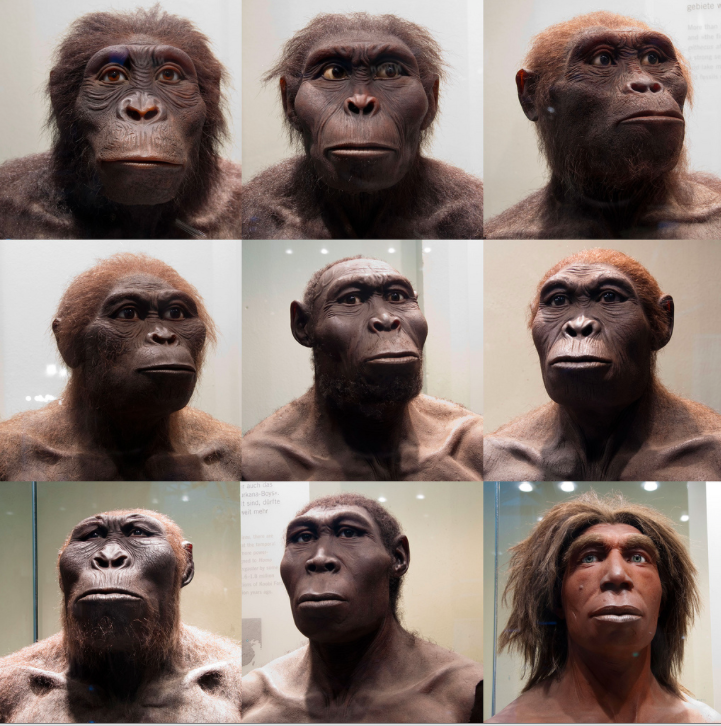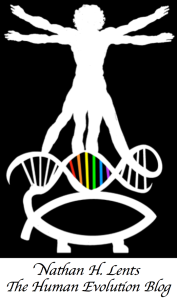2015 has been a very exciting year for Paleoanthropology. No doubt the pinnacle was the discovery of a brand-new hominin species Homo naledi, a bombastic revelation met with great and appropriate fanfare in the popular press. But H. naledi is not the only revision that is afoot in our understanding of the way that the Homo genus developed over the past few million years.

The father of taxonomy, Carl Linnaeus, like most people of his day (and our own), saw humans as so unique that no other species were fit to share our genus. In 1758, he gave this genus the name Homo using the Latin for man, of course. Because Linnaeus preceded Darwin by a century, he did not appreciate the universal shared ancestry of life on earth. Accordingly, the hierarchical grouping of species into larger and larger taxonomic categories was not meant to reflect ancestral relationships, only biological similarity. In any event, the genus Homo has been only rarely scrutinized ever since.

Alexander Roslin, 1775
The discovery of Neanderthals nearly 100 years after the death of Linnaeus led to the inclusion of a second species in our genus, Homo neanderthalensis, but this was not without controversy, then as now. By assigning Neanderthals to Homo, scientists were declaring them to be human beings, at least nominally. The break between religious and scientific authorities was complete.

That was fine and good for a time, but the late 19th and early 20th century saw an explosion of fossils of extinct hominins emerging from the earth, mostly from southern Africa. There are as many as 15 different species in the Homo genus and around a dozen species of the more primitive Austrolopiths, scattered among at least three genera. (The numbers are not precise because there are many disagreements about the classification of several specimens, especially those for whom there are only a few sparse teeth or bone fragments.) Even the approximate age of Homo keeps shifting.

Despite this, there has been little in the way of formal defining characteristics for the Homo genus. As Jeffrey Schwartz and Ian Tattersall recently wrote, “the genus remain[s] as fuzzy as ever, new fossils having been rather haphazardly assigned to species of Homo.” Several attempts to clarify the genus have been made over the years using characteristics such as teeth size and shape or bones of the face or jaw, but these have failed to resolve the differences, each for different reasons. The field of paleoanthropology has always fallen back on an ultra-inclusive definition of Homo leftover from the brief but powerful influence of Ernst Mayr, who considered Homo the genus for all upright walking apes.
That definition is no longer in force, as members of the Australopithecus and Paranthropus genera were definitely bipedal. Louis Leakey’s definition of Homo as “the tool-maker” is also inconsistent, not to mention impractical since only very rarely can such behavioral ability be gleaned from sparse fossil specimens. The result has been a rather informal separation of “early Homo” and “late Homo” species.

New discoveries; old problems
As more species of “early Homo” and Australopiths were discovered, the boundaries between them became blurred. For example, Richard Leakey and others believe that Homo habilis, considered by many to be the founding species of Homo, shouldn’t be in the genus at all and should instead be called Australopithecus habilis.
The same blurry line is found in the division between early and late Homo. Specimens as old as two million and as young as 70,000 years old have been assigned to H. erectus. There are several named species of Homo that many believe are just variants of erectus. Also, how certain are we of the taxonomic placement of, say, H. cepranensis, whose existence is known to us only from a single skull cap?
Schwartz and Tattersall are hardly the first to point out this need. Barely a year before, Bernard Wood also argued for the splitting of Homo, also focusing explicitly on Homo habilis.
It is in this confusing and messy context that H. naledi has burst onto the scene. It really is a spectacular find. In a rare show of paleontological generosity, mother earth coughed up literally thousands of fossils from at least 15 individuals. We have a nearly complete skeleton with lots of data regarding population differences. In one full swoop, we have more remains of H. naledi than we do of almost half of the named species of Homo and the Australopithecines. Some have suggested the cave was a burial site, but speculation on that is premature.

Precise age measurements have not yet been reported for H. naledi, but the lineage is estimated to go back about 2.5 million years. This means that naledi may even pre-date habilus and become the oldest of the Homo genus. The cranial volume of naledi is about half that of Homo erectus. Their posture indicates fully upright walking and their hands appear well-adapted to fine-motor object manipulation. However, their shoulders, arms, and collarbones all appear in a more “primitive” form than other members of the Homo genus.
You see the problem. The posture and hands look like Homo, but the head and upper body look like Austrolopithecus. Without a clear set of guiding principles, the genus of Homo will continue to be messy. Not only that, it may be time to admit that the diversity seen throughout the various Homo species is too much for one genus. After all, the specimens that Ernst Mayr once insisted were all part of one species, the now-defunct Homo transvaalensis, were broken up into at least three genera, none of them Homo.
The truly remarkable discovery of the naledi fossils will reverberate for some time, but the biggest impact may come not from what we learn about how these early Pleistocene apes lived, but in how we think about our own species of ape and what it really means to be human.
-NHL


You are right. My ALTERNATIVE:
https://www.academia.edu/12400931/Birth_of_modern_human_neither_in_Africa_nor_gradual_but_macroevolutionary_in_the_Levant_circa_150_000_years_ago …
LikeLiked by 1 person
There’s no need to revise the Homo genus: prof.Berger’s interpretations are anthropocentric.
It was no deliberate burial, no direct human ancestor, no distance runner, and probably no systematic tool user.
From a comparative viewpoint, Australopithecus naledi is no mystery (in fact predicted, see Trends Ecol.Evol. 17:212-7, 2002, google: aquarboreal): they were bonobo-like forest-swamp or wetland waders, feeding on waterlilies etc. (google: bonobo wading):
– They fossilised in stagnant water (mud-stone).
– The curved hand bones suggest vertical climbing in the branches above the swamps.
– The long thumbs were less for tool use than for collecting floating herbs & for surface-swimming.
– The broad pelvises (iliac flaring & long femoral necks) were for sideward movements of the legs (femoral abduction), e.g. for climbing or swimming, but not for running.
– The flat humanlike feet are more flamingo- (plantigrade wader) than ostrich-like (digitigrade runner).
Lowland gorillas often wade on 2 legs in forest swamps for papyrus sedges, frogbit etc. (google: gorilla bai), but naledi apparently exploited this special niche habitually: no wonder there were no or few other macro-fauna near the naledi fossils.
It was no deliberate burial (small brains), but a natural accumalation: when they died, their bodies sank in the mud, and afterwards later the underground eroded to become a cave system.
If we go back in time towards the Homo/Pan last common ancestor, Homo shows more Pan-like features, and Pan shows more Homo-like features: what is “primitive” in Homo might sometimes be “derived” in Pan, and vice versa.
IOW, naledi, in spite of its few primitive-Homo-like features (e.g. prenatal chimps have more humanlike feet), was more likely a close relative of Pan than of Homo (google: researchGate marc verhaegen).
LikeLike
Thanks very much for sharing these thoughts Marc. I suspect the issue of the intentional burial will be debated for some time. I am no geologist, but it is my understanding that the cave is quite old and surrounded by bedrock. I don’t see a way that the naledi remains could have sunk into it.
LikeLike
Hi Nathan, intentional burial is far-fetched & unnecessary IMO. The fossils are found in remarkable densities in mudstone without other macro-fauna, but that’s exactly what we see where lowland gorillas are wading for aquatic herbaceous vegetation AHV (google: gorilla bai). The illustrations in Dirks’ paper suggest that the mudstone slid side- & downwards with an average velocity of a few metres every thousand years, that’s not unlikely IMO. In any case, overal naledi is very bonobo-lie, the curved hand-bones leave no doubt they frequently climbed vertically in trees, the flat forefeet (more flamingo- than ostrich-like) suggest frequent wading or perhaps swimming. The small canines are to be expected with a diet of AHV. The longer thumbs are better explained by grasping AHV around the body or by swimming than by tool-making. The rest of the skeleton is very bonobo-like, and mudstone forms in stagnant water. Prof.Berger’s interpretations (intentional burial, tool-making, distance-running, human ancestors) are anthropocentric (just-so): naledi can be explained simply by natural processes (google: bonobo wading).
LikeLike
Can I ask, is race ever talked about on your blog? See my website please.
LikeLiked by 1 person
Reblogged this on The Ratliff Notepad.
LikeLike